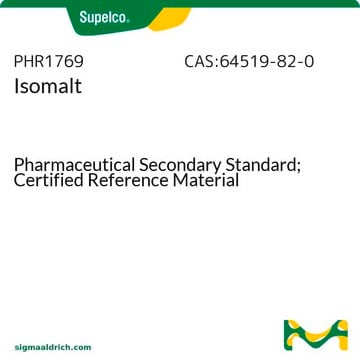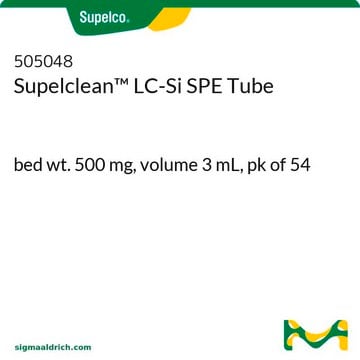24217-U
VOCOL® Capillary GC Column
L × I.D. 60 m × 0.32 mm, df 1.80 μm
Synonym(s):
FS CAP VOCOL® 60M 0.32MM 1.8UM (R&D PRODUCT)
Sign Into View Organizational & Contract Pricing
All Photos(1)
About This Item
UNSPSC Code:
77101502
eCl@ss:
32119290
NACRES:
SB.54
Recommended Products
material
fused silica
Agency
EPA TO-17,502.2,624,8015,8260,OLM04.2 VOA,524.2
NIOSH 1003
parameter
≤25-250 °C temperature (isothermal or programmed)
Beta value
44
df
1.80 μm
technique(s)
gas chromatography (GC): suitable
L × I.D.
60 m × 0.32 mm
application(s)
environmental
food and beverages
forensics and toxicology
industrial hygiene
column type
capillary intermediate polar
Looking for similar products? Visit Product Comparison Guide
General description
Application: This intermediate polarity column, designed for analyses of volatile organic compounds (VOCs), offers great retention and resolution of highly volatile compounds. Use this column in direct injection ports or coupled to purge and trap systems.
USP Code: None
Phase:
USP Code: None
Phase:
- Bonded
- Proprietary
- ≤0.32 mm I.D., <2 μm: Subambient to 250 °C (isothermal or programmed)
- ≤0.32 mm I.D., ≥2 μm: Subambient to 230 °C (isothermal or programmed)
- ≥0.53 mm I.D., <2 μm: Subambient to 250 °C (isothermal or programmed)
- ≥0.53 mm I.D., ≥2 μm: Subambient to 230 °C (isothermal or programmed)
Application
VOCOL® column (diphenyl dimethyl polysiloxane with crosslinking moieties) may be used for their relevancy to the purge-and-trap technique and GC/MS analysis of 34 volatile organics. It was also found suitable in being used for determination of volatile compounds by whole column cryotrapping.
Other Notes
We offer a variety of chromatography accessories including analytical syringes
Legal Information
VOCOL is a registered trademark of Merck KGaA, Darmstadt, Germany
Choose from one of the most recent versions:
Already Own This Product?
Find documentation for the products that you have recently purchased in the Document Library.
Customers Also Viewed
Determination of volatile compounds in water by purging directly to a capillary column with whole column cryotrapping.
Pankow JF and Rosen ME.
Environmental Science & Technology, 22 (4), 398-405 (1988)
Carina Aronsson et al.
Logopedics, phoniatrics, vocology, 32(2), 60-70 (2007-07-07)
The aim was to investigate how female patients with vocal nodules use their voices when trying to make themselves heard over background noise. Ten patients with bilateral vocal fold nodules and 23 female controls were recorded reading a text in
Youri Maryn et al.
Logopedics, phoniatrics, vocology, 40(3), 122-128 (2014-05-23)
Literature has shown that voice-disordered persons are at higher risk for negative attitudes on several personality and physical appearance traits than vocally normal persons. This study investigated general perceptions of health in subjects with various degrees of dysphonia. Recordings from
The effectiveness of phonological intervention in preschool children: a single-subject design study.
Nanna Palle et al.
Logopedics, phoniatrics, vocology, 39(1), 19-29 (2012-11-30)
The purpose was to investigate an intervention model for treating preschool children with phonological processes. Six children, three girls and three boys, between 4y 1m and 5y 7m, with similar developmental phonological disorder (PD) received an individually adjusted intervention including
Marwa Saleh et al.
Logopedics, phoniatrics, vocology, 40(1), 30-35 (2013-06-21)
The /r/ phoneme is variable in manner and place of articulation, and difficult to correct worldwide. Variability could exist within the same language. The objective of this study was to determine whether Egyptian Cairene /r/ was a trill or a
Our team of scientists has experience in all areas of research including Life Science, Material Science, Chemical Synthesis, Chromatography, Analytical and many others.
Contact Technical Service













